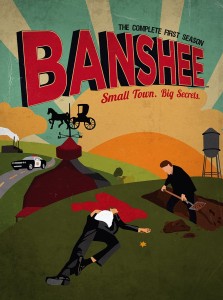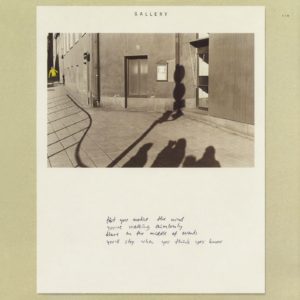michael: friends of mine recently travelled through the desterted north of canada. they love these open landscapes. sebastian, where have you been in America, what were the places that inspired the relaxed, joyful, open atmosphere of „Same As You“?
sebastian: i have spent three months of the last year in the mojave desert in california, it’s really a magical place for me, and the community there are so welcoming. being in this landscape made me feel differently about space and space in music, space in rhythm, and i love that when you’re out in the desert you feel the same as every other living thing out there, like you are shown your place by nature.
michael: ah, that’s where the title comes from. I try to imagine the sound …
sebastian: the sound is like a thick silence but then a noise far away can feel close to your ear. also, with some events in my life and being aware of all the greed, war and prejudice in the world, i felt to make something centred around positivity and love and breath.
michael: i think that it’s a bit easier to make an album full of misery und falling apart than it is to make something profound about the joyful things of life. has the mojave been a love at first sight-thing?
sebastian: yes, from the first moment i stepped out the car in the mojave, it was like my mind cleared and felt like a child in my clarity, this was special to me, finding this in london can be difficult sometimes. i was speaking to a man out there about how i felt a great energy and vibrance out there, and he told me, yes, well, every animal and plant is struggling to survive out there, so maybe that’s what you are feeling. made me think that is how in some ways it’s similar to london, it’s not a slow energy in the desert but a very aware and alert one. you have to be alert and present as your life can depend on it. you dont want to get lost there.
michael: an interesting connection between the big city and the middle of nowhere! The album was produced in your hometown, right?
sebastian: we recorded it in assault and battery in west london and then i made some echoes and spacial things at my place, i felt these like our sound bouncing off the desert mountains. the album was mixed by ken barrientos at red barn recorders in the high desert. when i heard iman omaris‘ album „viberations“ i was totally blown away also by the mix. so i looked into who did it and when i listened to kens music and other things he had been involved in, they all had this very special quality, like invisibly psychedelic and very physical.
michael: … and then you met this man you’ve never seen before …
sebastian: i read an interview with him and my instinct told me to contact him about mixing our album with my music, personal connections are important to me, so in a way felt like a risk cause i had never met him before but when i did, was like i had known him for a long time, he’s a really unique and special person. we started with a couple days at his studio, then we headed out to the desert to mix at red barn. ken also had the idea to visit the integratron as a start to our mixing. to me, he has really captured in the mix how the desert makes me fee spacious but close.
michael: in what way did he capture it?
sebastian: when i listened out there, the bass and drums are the earth, john is like the air and sky and saxes are the birds circling and swooping. another part of this album is also my learning about ancient kemetic philosophies from michael who does the piece at the beginning of the album. some of the music was made by me using audio to make symbols representing kemetic gods.
michael: don’t know about kemetism, sounds like something paegan. but i know about your love of raga music. in a special way this album works in its length, un-interruptedness and flow like a western jazz raga with some kind of dancefloor compatibility. i mean Arthur Russell would have loved it, wouldn’t he?
sebastian: yes is great you feel this, i love how in classical indian they stretch your perception of time, this definitely influenced me and the landscape in the desert feels like this, you can drive for hours in the states and it feels like nothing
michael: It is quite subtle how leafcutter john and you made use of field recordings without making them a cliche.
sebastian: the field recordings were made by me and laid under each track, i wanted the desert to be in there always, i really love what ken did with them by using compression,he made them move with the drums.
michael: SAME AS YOU is utterly accessible and experimental at the same time. How did the idea grow that the sax players of polar bear, pete and mark, should prefer simple short lines, no big solos?
sebastian: the saxes represent to me on this album the feeling of freedom and happiness, the lines i thought about a lot, meaning like a thick sauce you might get in a restaurant, not much of it but an intense flavour, this was my intention anyway,
i said to them they could solo for as long as they wanted but just said i wanted the music not to have an element of angst, it could be as experimental and free as they wanted but needed to retain the the feeling of expansion
michael: your drumming sounds very special, too. precise and loose. did you have rattles on your arm that vibrate when hitting on something? Everything seems to vibrate on the album …
sebastian: think maybe what you are hearing are the jingles on my little snare and possibly the rivets on all my custom cymbals. i used a bass drum,two hihats, three snare drums and two bombe legueros on this album.
michael: and so the whole music is …
sebastian: … inspired by indian classical, the desert and the desire to put love into the world.
michael: how did you find the cover art for the album?
sebastian: it is by an artist i love called sanchita islam, she made four different paintings that are part of our artwork as well as a poem by my father about love and celebrating diversity. i felt sanchita would understand the colours i was seeing, even from my first email to her, she wrote back with the colours she felt and they were perfect to me. so happy she agreed to make this for us. i wanted the album to look beautiful and vibrant, there is a booklet that comes with it.






